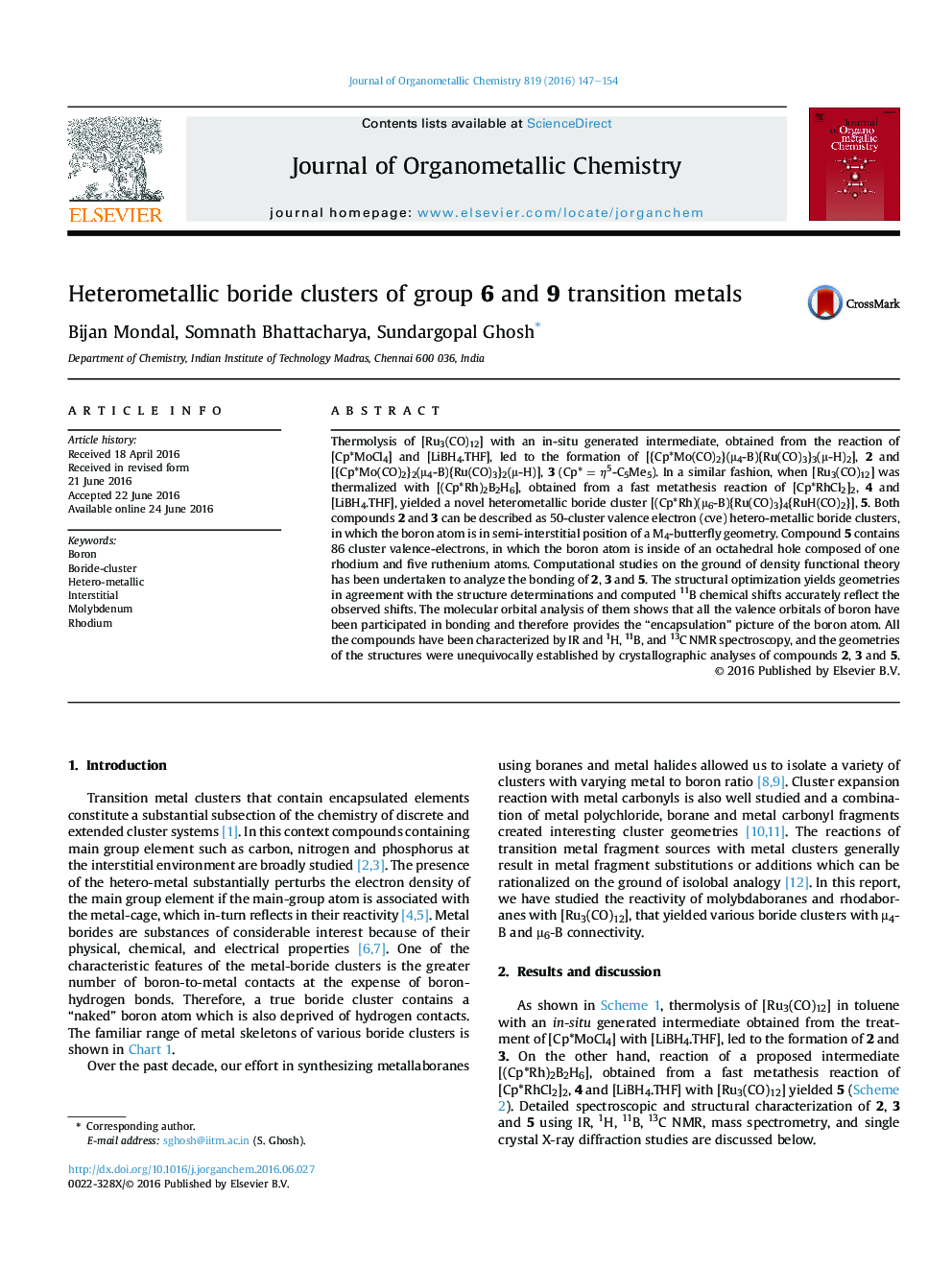| کد مقاله | کد نشریه | سال انتشار | مقاله انگلیسی | نسخه تمام متن |
|---|---|---|---|---|
| 1324461 | 1499827 | 2016 | 8 صفحه PDF | دانلود رایگان |
• Syntheses of M4B and M6B type boride clusters have been described.
• A combination of RhRu led to the formation of archetypal μ6-boride cluster.
• Electronic structures of all the compounds has been studies well with the help of density functional theory (DFT).
Thermolysis of [Ru3(CO)12] with an in-situ generated intermediate, obtained from the reaction of [Cp*MoCl4] and [LiBH4.THF], led to the formation of [{Cp*Mo(CO)2}(μ4-B){Ru(CO)3}3(μ-H)2], 2 and [{Cp*Mo(CO)2}2(μ4-B){Ru(CO)3}2(μ-H)], 3 (Cp* = η5-C5Me5). In a similar fashion, when [Ru3(CO)12] was thermalized with [(Cp*Rh)2B2H6], obtained from a fast metathesis reaction of [Cp*RhCl2]2, 4 and [LiBH4.THF], yielded a novel heterometallic boride cluster [(Cp*Rh)(μ6-B){Ru(CO)3}4{RuH(CO)2}], 5. Both compounds 2 and 3 can be described as 50-cluster valence electron (cve) hetero-metallic boride clusters, in which the boron atom is in semi-interstitial position of a M4-butterfly geometry. Compound 5 contains 86 cluster valence-electrons, in which the boron atom is inside of an octahedral hole composed of one rhodium and five ruthenium atoms. Computational studies on the ground of density functional theory has been undertaken to analyze the bonding of 2, 3 and 5. The structural optimization yields geometries in agreement with the structure determinations and computed 11B chemical shifts accurately reflect the observed shifts. The molecular orbital analysis of them shows that all the valence orbitals of boron have been participated in bonding and therefore provides the “encapsulation” picture of the boron atom. All the compounds have been characterized by IR and 1H, 11B, and 13C NMR spectroscopy, and the geometries of the structures were unequivocally established by crystallographic analyses of compounds 2, 3 and 5.
Novel μ4 and μ6 type heterometallic boride clusters: μ4-type (A) and μ6-type (B) (see picture).Figure optionsDownload as PowerPoint slide
Journal: Journal of Organometallic Chemistry - Volume 819, 15 September 2016, Pages 147–154
